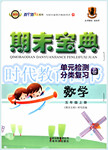题目内容
It only __________ him 20 minutes __________ to his office every day.
A.takes;to drive B.take;drive C.takes;drive
练习册系列答案
 期末宝典单元检测分类复习卷系列答案
期末宝典单元检测分类复习卷系列答案
相关题目
题目内容
It only __________ him 20 minutes __________ to his office every day.
A.takes;to drive B.take;drive C.takes;drive
 期末宝典单元检测分类复习卷系列答案
期末宝典单元检测分类复习卷系列答案